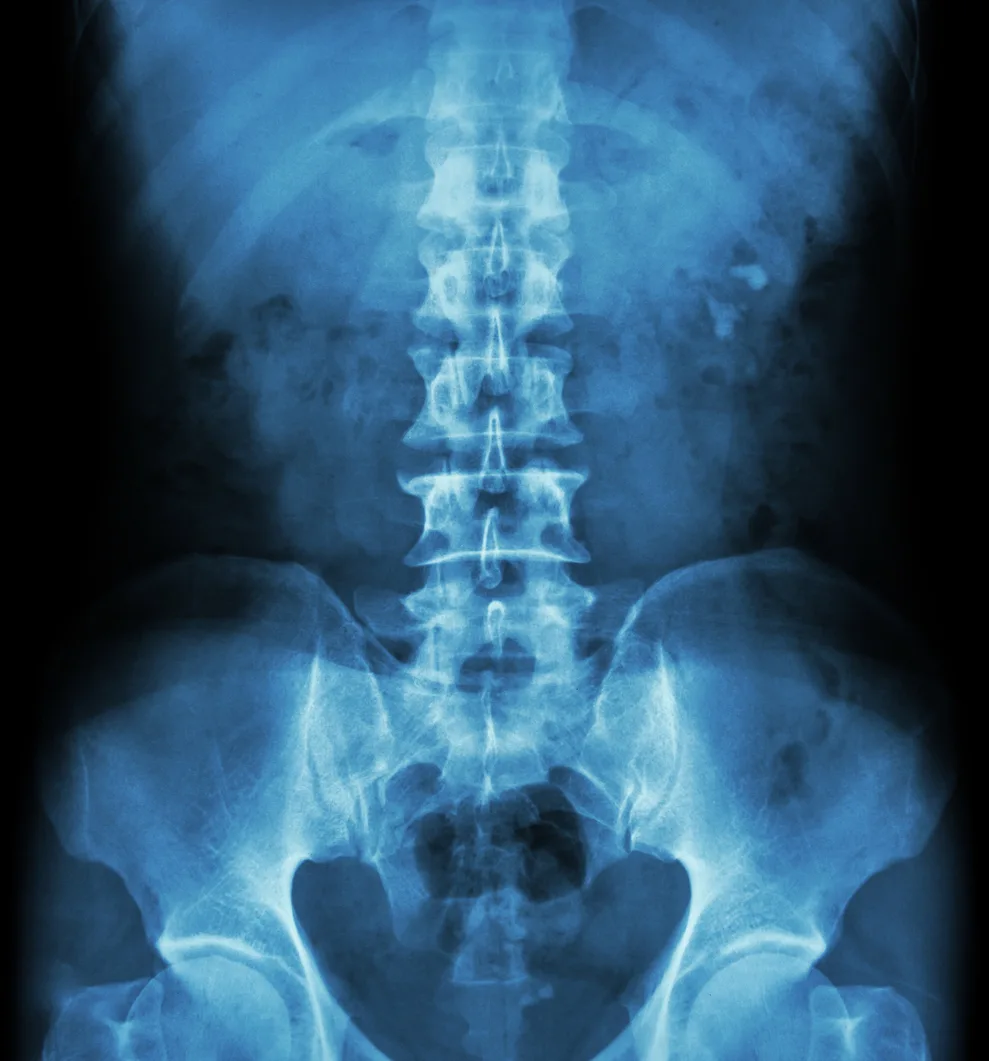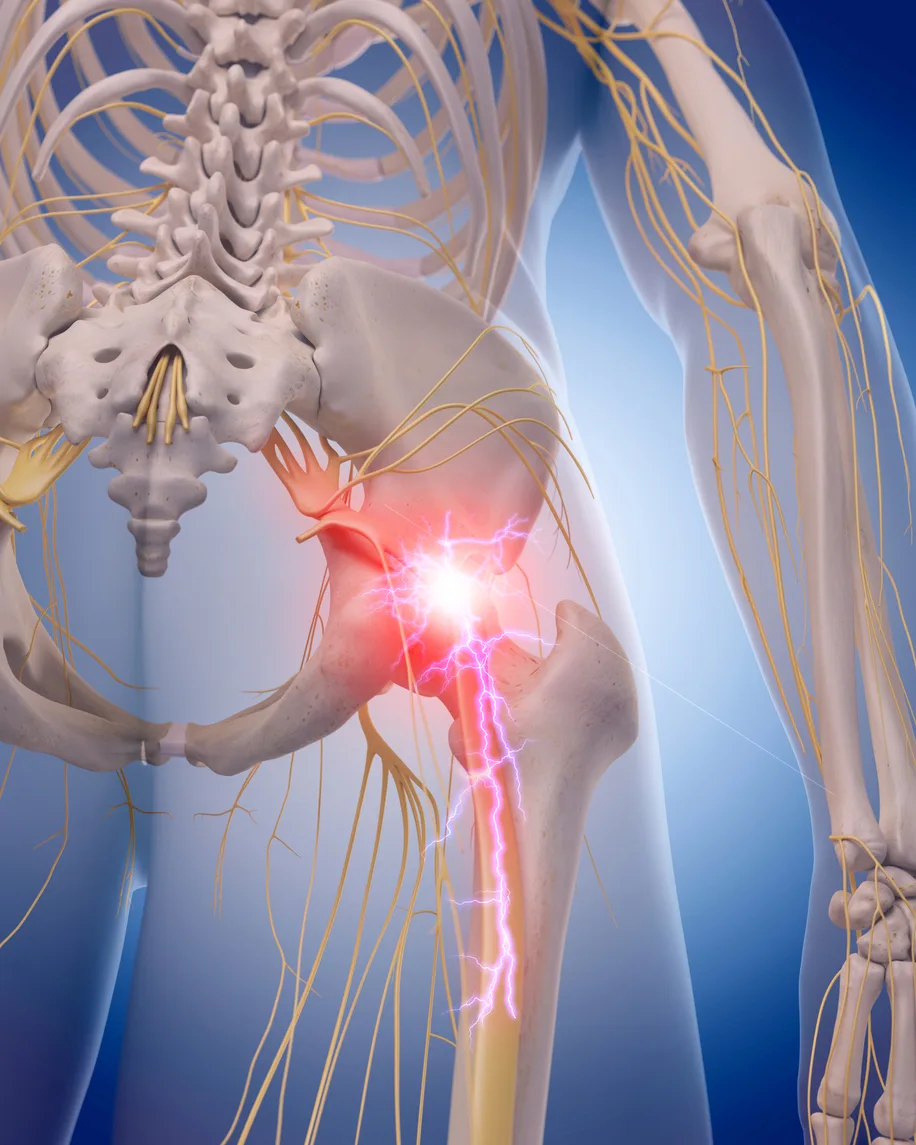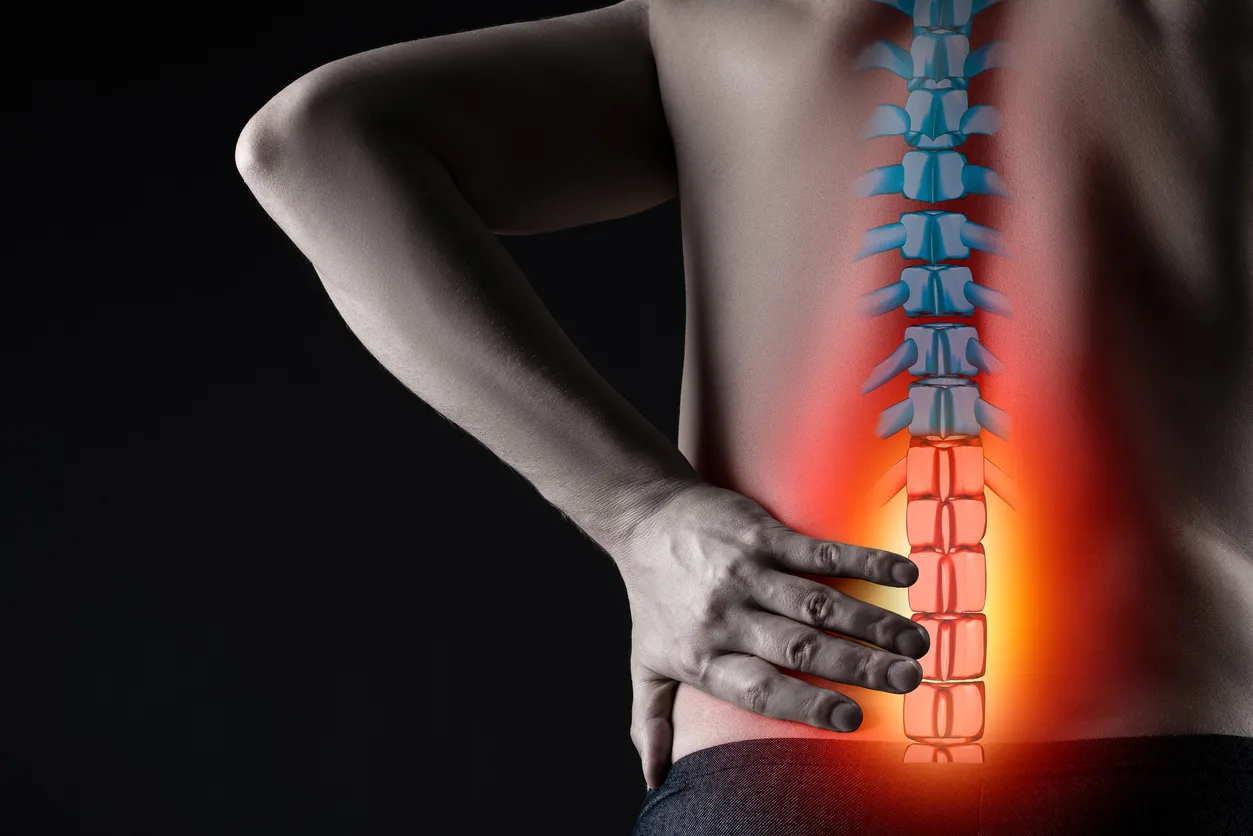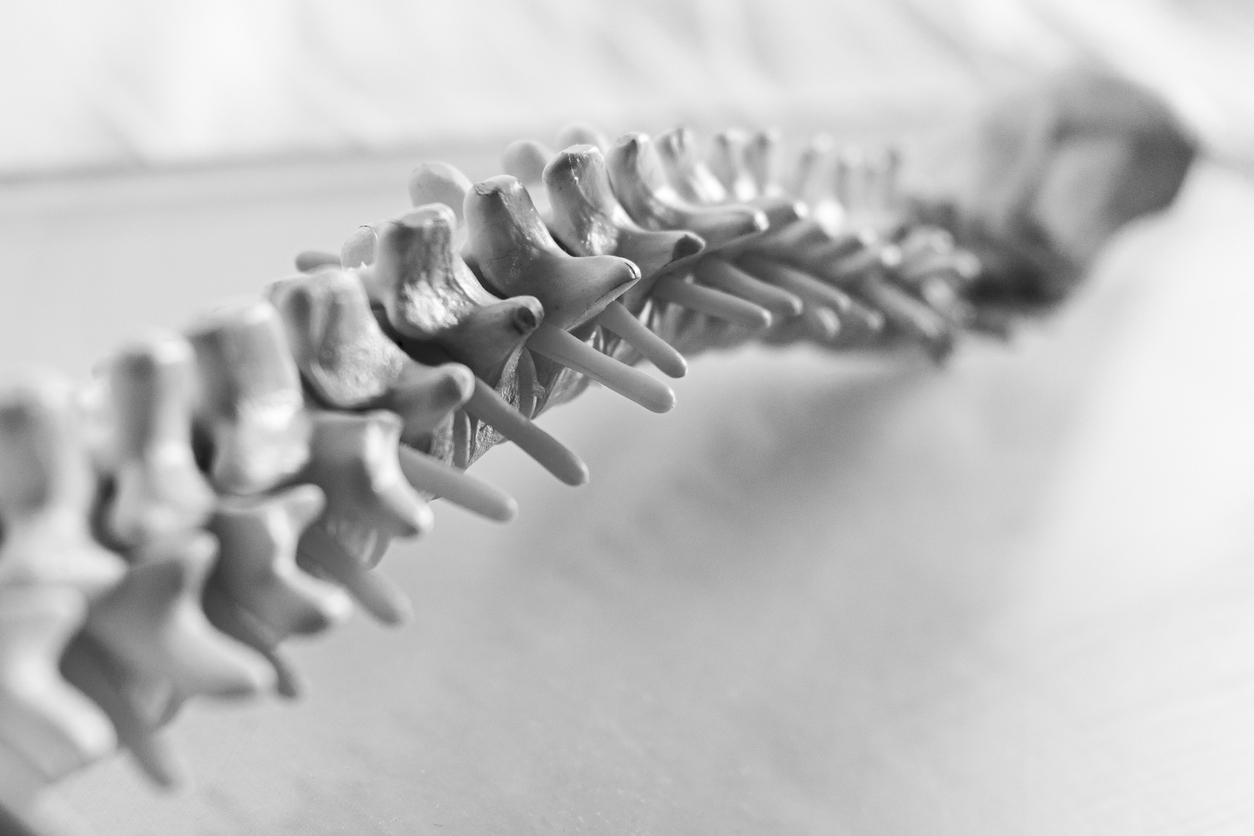
SCIATICA
Sciatica is a condition characterized by pain that radiates along the path of the sciatic nerve, which runs from the lower back through the hips and buttocks and down each leg. The sciatic nerve is the longest in the body and is crucial in connecting the spinal cord to the leg muscles. When this nerve becomes compressed or irritated, it can lead to a range of symptoms collectively called sciatica.
What is Lumbar Radiculopathy?
Lumbar radiculopathy, commonly known as sciatica, is a medical condition that involves the compression or irritation of one or more nerve roots in the lower back. “Lumbar” refers to the lower portion of the spine, specifically the five lumbar vertebrae. “Radiculopathy” indicates a problem with the nerve roots


How is Sciatica Diagnosed?
Sciatica is typically diagnosed through a combination of medical history, physical examination, and diagnostic tests. When you visit Envision Spine Surgery, Dr. Shen will start by asking you about your symptoms, the location and nature of your pain, and any activities or positions that worsen or alleviate your symptoms.
During the physical examination, our team may check your reflexes, muscle strength, and sensation in the affected leg. They might also perform certain maneuvers or movements to assess your range of motion and identify any specific triggers of pain or discomfort.
In some cases, additional diagnostic tests may be recommended to confirm the diagnosis or determine the underlying cause of sciatica. These tests may include:
- Imaging tests: X-rays can help identify any structural abnormalities in the spine, such as bone spurs or fractures. Magnetic resonance imaging (MRI) provides detailed images of the spine and can reveal herniated discs, spinal stenosis, or other issues.
- Electromyography (EMG) and nerve conduction studies (NCS): These tests measure the electrical activity in the muscles and nerves to assess nerve function and identify areas of nerve compression or damage.
Symptoms of Sciatica
-
- Herniated Disc: A herniated or slipped disc occurs when the soft inner material of a spinal disc pushes through a weakened or damaged outer layer. This can directly press on nearby nerve roots, causing radiculopathy.
- Spinal Stenosis: Spinal stenosis is the narrowing of the spinal canal, which can put pressure on nerve roots. It often occurs due to the natural aging process, leading to compression of the nerves.
- Degenerative Disc Disease: Over time, the spinal discs can degenerate, losing their cushioning properties. This can result in decreased disc height and the potential for nerve compression.
- Bone Spurs (Osteophytes): These bony growths can develop on the vertebrae due to arthritis or other degenerative conditions. They can encroach upon the space where nerve roots exit the spinal column.
- Spondylolisthesis: This condition involves one vertebra slipping forward over an adjacent vertebra. This can lead to nerve compression if the slipped vertebra impinges on nerve roots.
- Trauma: Injuries to the spine, such as fractures or dislocations, can result in damage to nerve roots, causing radiculopathy.
- Inflammation: Inflammatory conditions like spinal infections or autoimmune disorders can lead to swelling that presses on nerve roots.
- Tumors: Both benign and malignant tumors can grow within or near the spine, leading to nerve compression and radiculopathy.
- Sacroiliac Joint Dysfunction: Dysfunction of the joint connecting the sacrum and the pelvis can also cause symptoms that mimic radiculopathy.
- Lifestyle Factors: Poor posture, repetitive movements, and heavy lifting can strain the spine and contribute to nerve compression over time.
- Genetics: Some individuals may have a genetic predisposition to developing conditions like herniated discs or spinal deformities that can lead to radiculopathy.
It’s important to note that the severity and specific combination of symptoms can vary from person to person, depending on the underlying cause and the degree of nerve compression or irritation. If you are experiencing symptoms of sciatica, it is advisable to seek medical attention for a proper diagnosis and appropriate treatment.

What Happens If Sciatica Is Left Untreated?
If left untreated, sciatica can potentially lead to several complications and prolonged discomfort. Some of the possible consequences of untreated sciatica include:
- Chronic Pain: Sciatica can cause persistent and chronic pain that may worsen over time if not properly addressed. The pain can become debilitating, affecting daily activities, work productivity, and overall quality of life.
- Nerve Damage: Prolonged compression or irritation of the sciatic nerve can result in nerve damage. This can lead to long-term or permanent sensory changes, muscle weakness, and loss of reflexes in the affected leg.
- Loss of Mobility and Function: Sciatica-related pain and muscle weakness can limit mobility and affect your ability to perform regular activities such as walking, climbing stairs, or even sitting comfortably. Reduced mobility can further contribute to muscle imbalances, stiffness, and decreased physical fitness.
- Increased Risk of Falls and Injuries: Weakness and sensory changes in the leg due to untreated sciatica can increase the risk of falls and related injuries. The impaired sensation and muscle control can affect balance and stability, making it more challenging to navigate daily movements safely.
- Impact on Mental Health: Chronic pain can have a significant impact on mental health, leading to feelings of frustration, anxiety, stress, and depression. The persistent discomfort and limitations caused by untreated sciatica can negatively affect overall well-being and emotional state.
It is crucial to seek medical attention and appropriate treatment for sciatica to prevent or minimize these potential complications.
This information is intended for general use and is not meant to replace consultation with a physician. Please contact your provider if you are experiencing pain or unusual symptoms. Also, if you are experiencing a medical emergency please call 911.
What Is enVision Spine Surgery With Dr. Shen?
Envision Spine Surgery is the surgical technique Dr. Shen has pioneered. With endoscopic spine surgery, Dr. Shen makes a small skin incision of less than a half-inch and inserts an endoscope – a small tube approximately the size of a #2 pencil – through the incision by gently pushing muscles to the side. The tube houses a light source, an irrigation channel, a working channel for micro instrumentation, and a high-definition camera. The camera is connected to a monitor that Dr. Shen uses to view your spine without harming the muscles or ligaments.


The Shen-Spine Method to Sciatica
Dr. Shen has pioneered a groundbreaking approach to treating Sciatica called the Shen-Spine Method. This revolutionary surgical technique, known as Envision Spine Surgery, employs a minimally invasive procedure that sets it apart from traditional methods.
By creating a tiny incision, measuring less than half an inch, Dr. Shen skillfully inserts an endoscope—a slender tube comparable in size to a #2 pencil. This remarkable device houses a range of essential components, including a light source, an irrigation channel, a working channel for micro-instruments, and a high-definition camera.
Through the connected monitor, Dr. Shen gains a clear view of the spine, all while preserving the integrity of the surrounding muscles and ligaments, ensuring minimal damage.
How long does it take to recover from Sciatica treatment from the Shen-Spine Method?
The duration of recovery from Sciatica treatment using the Shen-Spine Method may vary from patient to patient, irrespective of the surgical approach. However, thanks to Dr. Shen’s pioneering Minimally Invasive Endoscopic Spine Surgery, which is the least invasive option for any individual requiring spinal surgery, the recovery period is often shorter compared to traditional methods.

Frequently Asked Questions About Spinal Stenosis
What Are the Treatment Options for Sciatica?
Treatment for sciatica may include conservative measures such as rest, over-the-counter pain medications, hot or cold therapy, physical therapy exercises, and steroid injections. In more severe cases, surgery may be considered.
Can Sciatica Be Prevented?
While it’s not always possible to prevent sciatica, certain lifestyle choices can help reduce the risk. These include maintaining good posture, exercising regularly to strengthen the back and core muscles, lifting heavy objects correctly, and practicing proper body mechanics.
Are There Ways To Prevent Lumbar Radiculopathy?
Maintaining a healthy weight, practicing good posture, using proper lifting techniques, and engaging in regular physical activity can help reduce the risk of developing lumbar radiculopathy.
Ready to take the first step towards a pain-free life?
Are you ready to embark on a journey toward a life free from pain? At Shen-Spine Surgery, we comprehend the frustration and debilitating nature of chronic back or neck pain, which can significantly impact your quality of life.
That’s why we are dedicated to assisting you in reclaiming the activities you cherish. Dr. Jian Shen, an experienced spine surgeon, offers a comprehensive range of state-of-the-art treatments and procedures designed to alleviate pain and enhance mobility. Whether you are grappling with spinal stenosis, herniated discs, or other spinal conditions, Dr. Jian Shen possesses the expertise to deliver personalized care and tailor-made treatment options.
If you are prepared to take the first step towards a pain-free existence, we encourage you to reach out to us today. Our affable and knowledgeable staff is ready to address your inquiries and arrange a consultation with Dr. Jian Shen. No longer should you allow back or neck pain to dictate your life—allow Shen-Spine Surgery to guide you back to the activities that bring you joy.
